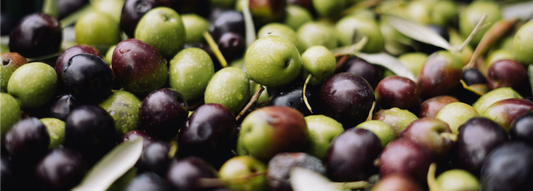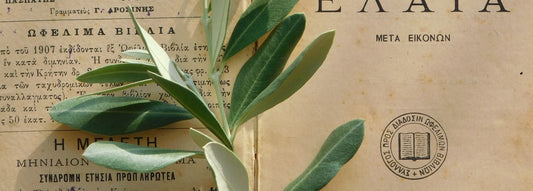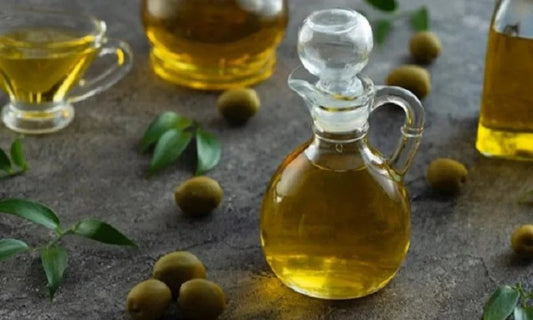In the August 13, 2007, issue of the magazine, Tom Mueller wrote about corruption in the olive-oil trade. By the late nineteen-nineties, olive oil—often cut with cheaper oils, such as hazelnut and sunflower seed—was the most adulterated agricultural product in the European Union. The E.U.’s anti-fraud office established an olive-oil task force, “yet fraud remains a major international problem,” Mueller wrote. “Olive oil is far more valuable than most other vegetable oils, but it is costly and time-consuming to produce—and surprisingly easy to doctor.”
Nearly five years later, fraud remains a problem. Mueller has expanded the scope of his article’s research with his recent book “Extra Virginity: The Sublime and Scandalous World of Olive Oil,” which focusses on the contamination of olive oil not only by seed oils but by the misuse of the label “extra virgin” on olive oils that don’t meet that designation’s standards. Mueller recently took the time to answer questions on olive oil and the risks involved in its trade; an edited version of the exchange appears below.
Why olive oil?
I’d been living in Italy for about ten years when I happened to see footage of olive farmers blockading the ports of Bari and Monopoli, in southern Puglia, with their tractors, in protest of what they said were imports of vegetable oils from elsewhere in the Mediterranean that were being illegally turned into olive oil by unscrupulous olive-oil producers and merchants. This caught my eye, and when I spoke with my editor at The New Yorker a short time later I suggested a story on olive oil. During the reporting for the story, I immersed myself in the subject, discovering a historic, cultural, religious, anthropological, and—yes—criminal depth to olive oil that seemed to deserve fuller treatment in a book.
Your reporting documents the shady and sometimes dangerous practice of olive-oil adulteration. Can you give a bit of background?
Olive-oil fraud has been around for millennia. The earliest written mention of olive oil, on cuneiform tablets at Ebla in the twenty-fourth century B.C., describes teams of inspectors who toured olive mills on behalf of the king, looking for fraudulent practices. The Romans established an international trade in olive oil, and certain emperors rose to power on olive-oil wealth—they were the ancient counterpart of today’s oil sheikhs. In their practical way, the Romans instituted elaborate mechanisms to prevent fraud. At Monte Testaccio, the Romans stored twenty-five million amphorae that held 1.75 billion liters of olive oil. Many amphora fragments bear tituli picti, stamped inscriptions or handwritten notes in black or red ink that record information such as the locality where the oil was produced, the name of the producer, the weight and quality of the oil when the amphora was sealed, and the name of the merchant who imported it, the name of the imperial functionary who confirmed this information when the amphora was reopened at its destination in Rome, and so on. These careful records were intended to prevent the siphoning off of oil en route, or the substitution of an inferior product.
Olive-oil fraud continues today, though modern governments are often less thorough and effective than the Romans at preventing it. Olive oil has historically been one of the most frequently adulterated products in the European Union, whose profits, one E.U. anti-fraud investigator told me, have at times been “comparable to cocaine trafficking, with none of the risks.” In America, olive-oil adulteration, sometimes with cut-rate soybean and seed oils, is widespread, but olive oil is not tested for by the F.D.A.—F.D.A. officials tell me their resources are far too limited, and the list of responsibilities far too long, to police the olive-oil trade.
Modern olive-oil production has changed since the Roman times, too. Where is its future headed?
Two diametrically opposed trends exist in the olive-oil business. In the first, toward high-quality olive oil, new milling technologies—stainless steel mills, high-speed centrifuges, temperature- and oxygen-controlled storage tanks—are making it possible to produce the best extra-virgin olive oils in history: fresh, complex, and every bit as varied as wine varietals. (There are about seven hundred different kinds of olives.) Consumer demand for high-quality olive oil in all of its variety, both in Europe and in North America, is skyrocketing.
On the other hand, there’s a strong downward pressure on olive-oil quality, especially among the huge Spanish-, Portuguese-, and Italian-owned olive-oil traders and bottling companies. There is a massive output of low-grade olive oils, particularly in Spain and North Africa but throughout the E.U., which producers are selling as “extra virgin” olive oil, even though this low-grade oil doesn’t meet the requirements of the extra-virgin grade. (E.U. and U.S. trade standards require extra-virgin olive oil to be free of sensory defects, and these oils are deeply flawed.) New methods of chemical refinement, commonly known as “deodorization,” allow unscrupulous producers to remove sensory defects and sell their sub-par oils, illegally, as extra-virgin. (By law, extra-virgin olive oil cannot have undergone chemical manipulation.) The spot price of “extra-virgin olive oil” in European markets has dropped as low as 1.8 euro per kilo (about a liter). Honest producers around the world are being undercut by cheap foreign oil.
So, while the best extra-virgin olive oils in history are now being made, more and more low-grade oils are also being included in the category, stretching it beyond all meaning. In the end, I believe that increasing discernment and quality-consciousness on the part of North American consumers will drive a quality revolution in American olive oil, similar to that which has already occurred in wine, coffee, microbrew beer, artisanal cheeses, etc., which will pass along increasing profits to top-quality producers, allowing them to survive and even prosper. But the olive-oil industry is at a critical moment: if honest producers aren’t able to earn a fair price for their premium oil (which is far more expensive than the cheap stuff to produce), then many will go out of business. Many already have. The risk is that just as American consumers wake up to great oil, the supplies of it dry up.
Given that so many “extra-virgin” oils are actually inferior oils cut with other products, where should the average shopper buy his oil?
Ideally, at a mill, where you can see the fresh olives turned into oil, and get to know the miller—in an industry where the label means so little, personal trust in the people who have made and sold it is important. Barring this, try to visit a store where you can taste before you buy; an increasing number of olive-oil specialty stores exists throughout America, even in small towns and unexpected corners of the country. In a conventional retail store, certain characteristics of labelling and bottling suggest (though they don’t guarantee) high quality: a harvest date (as opposed to a meaningless “best by” date), a specific place of production and producer, mention of the cultivar of olives used, dark glass bottles (light degrades olive oil), a D.O.P. seal on European oils, and a California Olive Oil Council seal on oil made in the U.S.
What most surprised you as you were researching your book?
Aside from the high incidence of fraud in olive oil, which stunned me, I found the taste panel the most surprising feature of the olive-oil world. These groups of eight tasters, plus a panel leader—which meet regularly to train their palates to recognize the seventeen official sensory flaws listed by international regulation, and, at the same time, to identify the characteristics of high-quality oil—provide amusing and sometimes theatrical displays: loud slurping, poetic language about olive oils great and repugnant, and some larger-than-life characters.
So what’s your favorite olive oil?
Tough question. As per the above, the range of olive oils is huge—it’s like asking what my favorite wine is. All the more difficult because, apart from oddballs like me who love to sip olive oil neat, it really is a condiment and not a culinary soloist. That said, from a purely taste point of view, the olive oil “Crudo” made by the Schiralli family in Bitetto, Puglia, and “Balduccio” made by Andreas März near Pistoia, Tuscany, are two of my very favorites.
I’ve launched the Truth in Olive Oil movement to raise awareness of great oil and call out fraudsters, connect consumers with excellent but little-known producers, pressure authorities to act, and generally solve the world’s problems through olive oil. Seriously, though, I do hope this Web site and its following will create something of a grass-roots movement in olive oil, which will do what the F.D.A. and other authorities have so far failed to do—help police the olive-oil market—and will increase consumer discernment of the vast complexity of olive oil.




